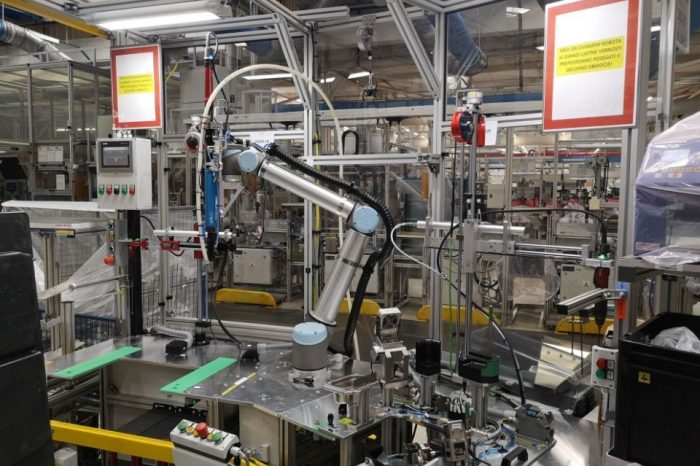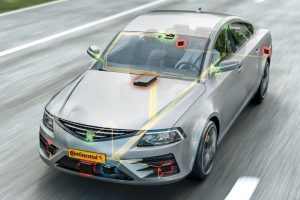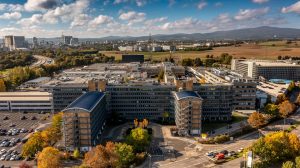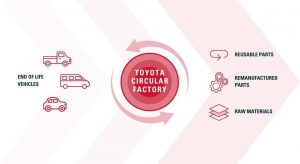Eberspächer provides electronic solutions for safe and stable power grids

The Eberspächer Group ranks as a leading system developer and supplier in the automotive industry. The company based in Esslingen am Neckar in Germany stands for innovative solutions in exhaust technology, thermal management, and automotive electronics for different vehicle types. In classic drives and in e-mobility, Eberspächer components and systems ensure increased comfort, higher safety, and a clean environment. For the use of hydrogen as an energy carrier, Eberspächer is paving the way for future technologies.
The Group of Companies operates globally, with 11,200 employees at about 80 locations in 30 countries. Founded in 1865, it remains a family-owned business to this day. In the Automotive Controls Division, customers find a competent innovation partner. Whether for tailor-made or standardized power electronics: The product range extends from control units and semiconductor switches for stable and safe on-board networks to battery management systems and control units for electric heating solutions. Johannes Weber, Business Center Director for Power Storage Solutions and Battery Management Systems, gives an insight into the trends and innovations in this field.
- What are the most significant trends you’re observing in the automotive electronics sector today, especially in relation to Eberspächer’s core areas?
Electronic vehicle architecture is becoming more and more complex. This is not only due to the electrification of the power train but also the increased automation. The growing number of electrical functions is rising demand for control units in modern vehicles—and therefore space is becoming ever tighter. In addition, reliability and monitoring of vehicle electric systems are also becoming more important—especially for autonomous driving. As a response, automotive manufacturers have to redefine the low-voltage power grid. In the future, it will evolve from an architecture with higher standardization towards more specific solutions for individual car producers and platforms.
- How is Eberspächer adapting to the growing demand for electric and hybrid vehicles?
Both Divisions, Climate Control Systems and Automotive Controls, already generate around 90 percent of sales independently of the conventional combustion engine in passenger cars. The products contributing to this are electrical heaters and vehicle electronics such as semiconductor-based fast switching power management solutions, supercapacitor modules, battery management systems and control units for these heaters. As a technology-driven company we are leveraging our extensive expertise for forward-looking solutions. We are well prepared for the future with the right portfolio for every drive type. In addition, our international manufacturing footprint enables us to be successful in all regions, even under changing market conditions. The mobility of tomorrow is characterized by a wide range of trends, needs and requirements. We not only want to keep pace but stay ahead of them.
- What role does your R&D center in Cluj play in this transformation? Can you share details about some of the key projects your team in Cluj is currently working on?
We opened our R&D Center in Cluj-Napoca in 2021, with a clear vision to quickly become a competence center for basic software and e-mobility projects. Since then, we further expanded our know-how by acquiring and developing the skills and infrastructure for software and system testing, as well as application model-based development. The development is focused on high voltage electrical heaters and low voltage power electronics.
For instance, we completed a 12 V battery management system (BMS) development in July for the starter and auxiliary battery of passenger cars of a leading international car manufacturer. This battery will be used in electrified and traditional powertrains. Our team in Cluj-Napoca was involved in the basic software and model-based development as well as testing. Our battery management system protects the starter battery, which supplies the car’s radio, lights and power steering, for example. As lithium-ion cells are not intrinsically safe, they require a BMS. It prevents hazards such as overloading, short-circuiting or thermal runaways. It also ensures that power is always available for automated driving functions and is connected to the vehicle on-board network. The BMS communicates with the other control units and ensures safe vehicle operation at all times. This makes Eberspächer one of the first to take such a product into series production.
Moreover, just recently we launched our PowerSentinel Advanced Switching Solution at the Battery Show in Detroit, Michigan. It protects subnetworks and isolates them from the electric power grid in case of a fault. This feature is essential, for example, in the case of short circuits, cable breaks and overvoltage events. With its current carrying capability of 200 A continuous and 2000 A peak current the PowerSentinel is the world’s smallest device of its kind.
- What’s the impact of these projects on the company’s product portfolio and market strategy?
These projects contribute essentially to the company’s market strategy, strengthening our presence in the most advanced fields of the automotive industry. With the 12 V BMS, we enter a new product segment and expand our expertise in the implementation of large software projects. In the PowerSentinel, we bring together our knowledge and experience from more than 20 years of development in automotive electronics. Adding these products to our existing portfolio of supercapacitor modules and power management solutions supports our mission to offer a complete range of low voltage power electronics to our customers.
- How do you see the evolution of autonomous driving and connected car technologies affecting automotive electronics?
The evolution of autonomous driving and connected car technologies significantly enlarges the role of automotive electronics. Reliability and monitoring of the on-board network are becoming more important. This is where our products – from battery management systems to switching solutions – come into operation, providing protection up to safety integrity level D.
Our 12 V BMS for starter batteries for example provides the necessary safety for automated driving functions and reduces up to 12 kilograms in weight due to switching from lead-acid to lithium-ion batteries in the low-voltage range. Our semiconductor-based switching solutions allow for safe switching in less than 100 μs compared to seconds or even minutes in traditional melting fuses.
Additionally, our supercapacitor-based power storage solutions enable a secure and lightweight redundant power supply for autonomous or x-by-wire systems. Our focus is to ensure that our electronic solutions are highly integrated, intelligent, and adaptable to meet the demands of the future automotive landscape.
- With increasing regulations around emissions and vehicle safety, how do you address these challenges?
We guarantee vehicle safety even as the degree of automation of driving functions increases with a range of products in our portfolio – from the PowerSentinel to the 12 V BMS. Moreover, the Power Distribution Module is a solution for the safe distribution of energy and intelligent monitoring of the low-voltage grid. Customizable for each individual customer, it does actively contribute to autonomous driving at level 5.
Sustainability is solidly integrated into our corporate strategy. Our goal is CO2-neutral production by 2030 and we want to be a CO2-neutral company by 2040. We develop products for a clean and quiet mobility in all Divisions with an open approach to technology. The product portfolio of the Eberspächer Group includes exhaust emission conversion components for conventional drive technologies that reduce pollutant emissions by up to 90 percent, as well as thermal management systems that optimize the range of electric vehicles.
Our automotive electronics solutions enable vehicle manufacturers to reduce weight and quiescent currents in the power grid, thereby effectively supporting emission reductions. They are smaller in size and use less components helping to reduce variants and transportation volumes, hence decreasing CO2 emissions. We achieve this while maintaining or even increasing the safety level of the grid and the overall vehicle.
- What are the main challenges you face in terms of attracting and retaining top engineering talent, especially in a competitive market like Cluj? What strategies are you employing to build a strong R&D team?
We feel that our biggest challenge within the Division Automotive Controls and in Cluj-Napoca is to find great people, that are also reliable, highly knowledgeable and versatile professionals. We always strive to maintain our culture of tolerance, trust and respect. Particularly now in the industry, we will encounter many challenges and tight deadlines, so it is important for us to know that we work with colleagues who are willing to share knowledge, help each other and celebrate successes together.
The way we treat each other is our top differentiator. This is also shown in our internal employee survey year after year. We take pride of our low hierarchy and our speak-up culture. We encourage each other to openly address any issue regardless of role or seniority.
- What is the long-term vision for Eberspächer’s R&D efforts in Romania?
Our R&D location from Romania will have a central place in the future of our company, as a center of competence for complete software development and functional testing for all our electronic control units (ECUs). In addition, it will play an important role in hardware and mechanical development of these ECUs. Our vision is to continue to develop our competence center and to increase its footprint. We prove this also through our presence here, at the seventh edition of the Automotive Forum and Awards 2024.



















